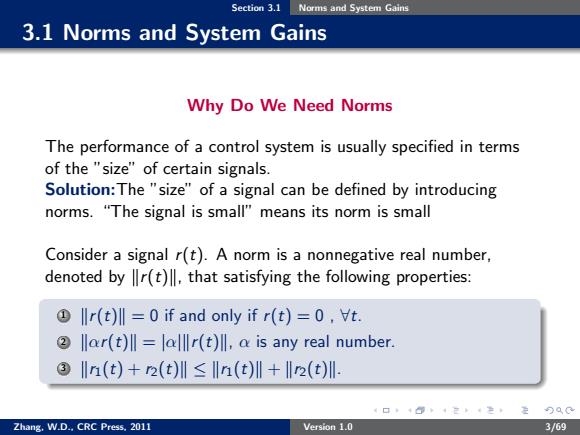正在加载图片...

Section 3.1 Norms and System Gains 3.1 Norms and System Gains Why Do We Need Norms The performance of a control system is usually specified in terms of the "size"of certain signals. Solution:The "size"of a signal can be defined by introducing norms."The signal is small"means its norm is small Consider a signal r(t).A norm is a nonnegative real number, denoted by (t),that satisfying the following properties: llr(t)ll =0 if and only if r(t)=0.Vt. llar(t)=alr(t),a is any real number. ③ln(t)+2(t)川≤ln(t)l+I2(t)l- 4口,4心4定4生,定QC Zhang.W.D..CRC Press.2011 Version 1.0 3/69Section 3.1 Norms and System Gains 3.1 Norms and System Gains Why Do We Need Norms The performance of a control system is usually specified in terms of the ”size” of certain signals. Solution:The ”size” of a signal can be defined by introducing norms. “The signal is small” means its norm is small Consider a signal r(t). A norm is a nonnegative real number, denoted by kr(t)k, that satisfying the following properties: 1 kr(t)k = 0 if and only if r(t) = 0 , ∀t. 2 kαr(t)k = |α|kr(t)k, α is any real number. 3 kr1(t) + r2(t)k ≤ kr1(t)k + kr2(t)k. Zhang, W.D., CRC Press, 2011 Version 1.0 3/69